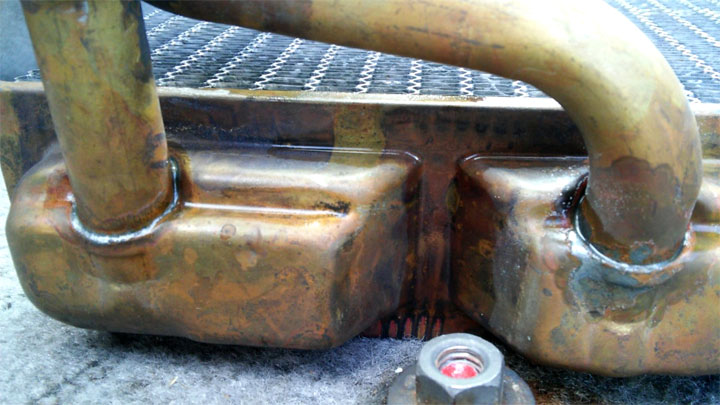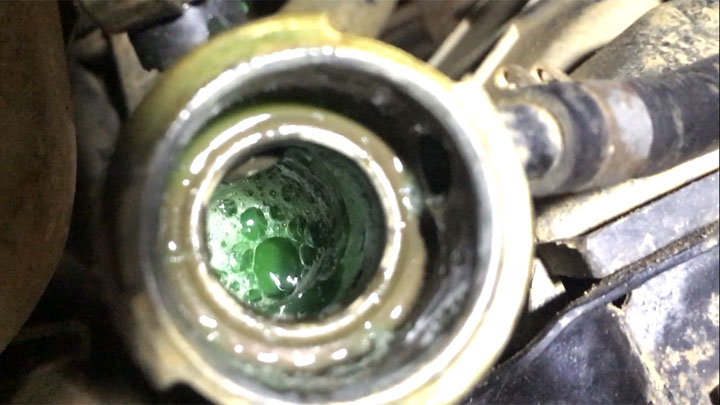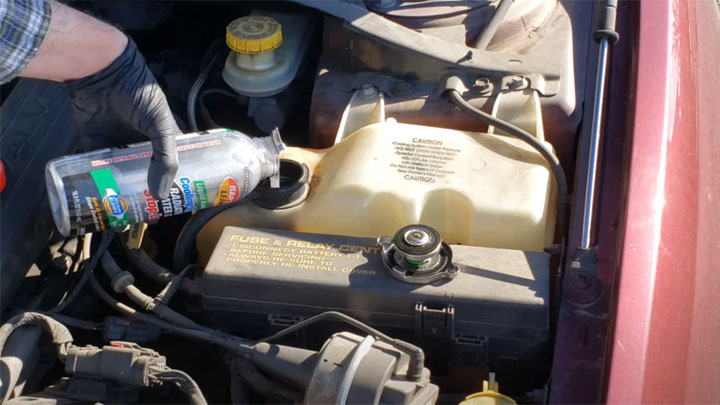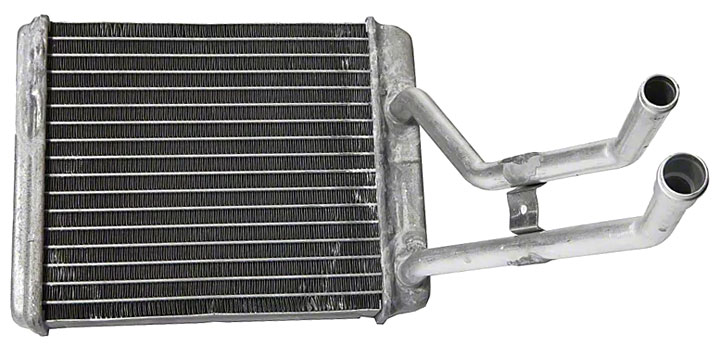Last Updated on November 8, 2021
As fall slips away, and winter begins, frigid temperatures take hold over much of the country. This is the point at which most motorists come to appreciate their vehicle’s heat. That is, of course, if their vehicle’s heat is functioning as anticipated. After all, a lack of heat during the winter months can make for an excruciatingly frigid commute.
Unfortunately, a vehicle’s heating system is prone to mechanical failure on occasion, much like a vehicle’s air conditioning system. A lack of heat can be caused by many different issues, which tend to vary in severity. However, few such issues are quite as prevalent, or aggravating, as that of a clogged heater core.
A heater core is an essential component within a vehicle’s heating system, which must operate unabated, and at peak efficiency, in order to promptly eliminate the chill from a vehicle’s cabin. Any problem with a vehicle’s heater core, including those that involve clogging, undermines the heating system’s ability to regulate internal temperatures.
Read on to learn more about the symptoms of a clogged heater core, as well as what to do in the event that you encounter such issues in the future.
What is a Heater Core?

A heater core is a heat exchanger that radiates heat into a vehicle’s cabin. This heat originates from engine temperature coolant that flows throughout a vehicle’s heater core, via small tube-like passages.
A vehicle’s blower motor forces air across a heater core, dispelling heat through the adjacent duct-work. As a result, warm air fills a vehicle’s cabin, thereby stopping winter’s chill in its tracks. The end result is a comfortable commute for drivers, even in the face of bitter cold seasonal temperatures.
A heater core features inlet and outlet junctions at a vehicle’s firewall. Coolant lines are affixed at these junctions, courtesy of hose clamps or quick-connect unions.
Some vehicles regulate the flow of coolant through these hoses, by way of a specialty heater control valve. This valve is typically controlled by vacuum, or electrical means, and actuates in response to control head input.
The heater core itself is mounted deep beneath a vehicle’s dash, in close relation to the interior side of the firewall. As a result, heater core-related issues are typically diagnosed by analyzing one or more symptoms associated with the failure at hand.
Therefore, it is extremely important to recognize and understand the various symptoms associated with a faulty or obstructed heater core.
Symptoms of a Clogged Heater Core
There are numerous symptoms that often accompany the presence of a clog within a vehicle’s heater core. While the symptoms associated with such a failure often differ on a case-by-case basis, several symptoms tend to be prevalent in the majority of cases.
The following are several of the most common symptoms of a clogged heater core.
#1 – No Heat

The most common symptom of a clogged heater core is a general lack of heat. When coolant is unable to circulate through a vehicle’s heater core, heating efficiency is severely diminished.
As such, one can expect a frigid commute, with little reprieve at the hands of their hobbled heating core.
#2 – Sub-Par Heat in Extreme Cold

In certain cases, your vehicle’s heat might prove sufficient during periods of mildly cold weather, only to fall flat when the extreme cold takes hold. This condition is indicative of a partially clogged heater core.
While enough warm coolant is allowed to flow to provide some heat, the system’s overall heating capacity is greatly reduced. In such instances, a thorough flush will often restore a system to full functionality.
#3 – Possible Overheating

In most cases, a clogged heater core, by itself, will not cause overheating. However, when combined with additional issues, engine overheating may result.
This is often the case when cooling system efficiency is already compromised, such as in the case of a faulty water pump or a partially clogged radiator.
What Causes A Heater Core To Clog
There are numerous potential causes of a clogged heater core. While each of these causes differs in origin, all lead to the same troubling condition, which must be remedied in order to restore heater core operation back to peak efficiency.
The following are several of the most common causes of a heater core leak.
#1 – Rust/Scale Build-Up

Corrosion of any type is extremely detrimental to a vehicle’s cooling system as a whole. However, heat exchangers found within this system are especially prone to problems resulting from rust and scale build-up.
This includes the heater core, which tends to clog quite easily. Rust and scale build up of this type often result from the prolonged use of water within a vehicle’s cooling system.
See Also: How to Remove a Rusted Bolt
#2 – Mixing of Oil/Coolant

When oil and coolant mix, sludge is created as a byproduct. This sludge quickly spreads throughout a vehicle’s cooling system, including the heater core.
Due to the density of this sludge, clogging often occurs, ultimately slowing or eliminating the flow of coolant throughout the heater core. Gasket failure is by far the most common cause of oil/coolant mixing.
#3 – Use of a Stop Leak Product

Many vehicle owners choose to use various stop leak products to eliminate cooling system leaks of one type or another. However, these products tend to cause clogging within a vehicle’s heater core.
This is especially true when more than the recommended amount of such products are used. Stop leak products can also clog a vehicle’s radiator in a very similar manner.
Heater Core Flush Cost
In certain instances, a clogged heater core can be flushed, thereby restoring a vehicle’s heating efficiency. In other cases, a heater core must be replaced, as efforts to alleviate a clog through flushing, have proved futile.
In any event, it costs significantly less to flush a heater core, than it does to replace the affected heater core in its entirety. This is due to the significant amount of time that is required to replace most heater cores and the labor cost that such an expenditure of time commands.
In general, a heater core flush typically costs somewhere in the neighborhood of $75-$100. However, this price also varies depending upon the make and model of the vehicle in question, as well as one’s choice of service center.
Heater Core Replacement Cost
Best places to order parts? See: 19 Best Online Auto Parts Stores

In the event that a traditional heater core flush yields no results, and you are still left without sufficient heat, heater core replacement might be necessary. This, unfortunately, is an expensive proposition. Due to the heater core’s location deep within a vehicle’s dash, much time and effort are required for removal.
As such, the labor costs associated with heater core replacement tend to be quite extensive. However, the exact price of these repairs can vary greatly from one model of vehicle to the next.
Most shops charge for the number of labor hours specified by a vehicle’s manufacturer when completing repairs. In certain cases, heater core replacement can require as much as 7-8 hours of labor.
On average, heater core replacement costs approximately $750-$1,100. This includes both the cost of a heater core itself and the labor associated with installation.
The lower end of this price spectrum reflects replacement with relatively cheap parts/labor, while the higher cost is representative of replacement in a dealership setting, with the use of OEM components.



